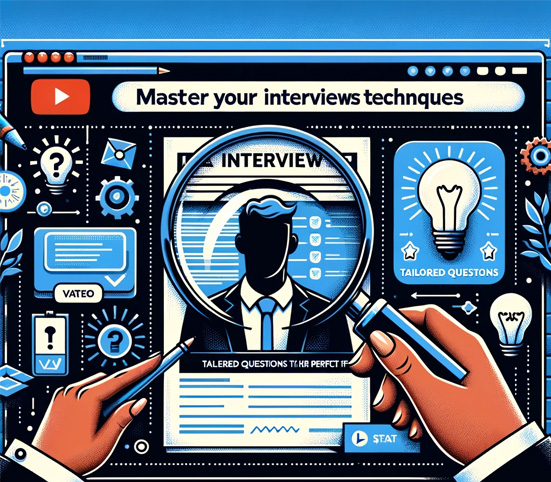The Bottom Line: According to Gartner research, employees with ineffective managers are 15 times more likely to be low performers, 13% less engaged, and three times more likely to quit.
So what do we do? We train managers on coaching, communication, delegation, and feedback – but coach them toward what? Without clear outcomes defined for the roles they’re managing, that training has nothing to anchor to. In my 20+ years in C-level HR roles, I’ve coached hundreds of managers. I’ve asked them a simple question: “One year from now, after hiring someone for this role, how is your unit quantifiably better?” The vast majority can’t answer it without significant effort. If you can’t say what the role will accomplish…why is the box going on your org chart?!
Organizations pour billions into manager effectiveness programs while ignoring the foundation. We need to focus manager training on just three things: 1) Create crystal-clear definitions of what each role needs to accomplish; 2) be hyper-specific about how we’ll define “good” and 3) acquire the skills to communicate that clarity. Stop wasting the rest of the money.
The ROI for investing in just these three things is huge (see my ROI calculation below).
According to Gartner research, managers today are responsible for 51% more than they can effectively handle. Team sizes have tripled since 2017, and 75% of HR leaders report their managers feel overwhelmed.
So organizations respond predictably: more training programs, better KPI dashboards, new engagement surveys, technology platforms to reduce administrative burden.
But here’s what no one’s saying: You’re measuring and developing manager effectiveness against roles that were never properly defined in the first place.
You can’t optimize what you haven’t designed. And most organizations are trying to fix manager performance without ever establishing what successful performance actually looks like.
The Foundation That’s Missing
When 72% of Gen Z workers would rather grow as individual contributors than take on management roles, and 1 in 5 current managers would leave leadership if they could, the problem isn’t just workload. It’s clarity.
Instead of thinking about burnout of managers, think about the situation they’re in. Are we teeing them up to be effective? Or are we creating hurdles they can’t overcome?
Anne Maltese, VP of People Insights at Quantum Workplace
Most managers step into leadership roles without ever experiencing true role clarity themselves – and without learning how to create it for others. They inherited vague job descriptions, so they perpetuate vague expectations. Nobody taught them that the first job of management is creating crystal-clear role blueprints for their team.
The Dysfunction Cascades Down and Amplifies
This isn’t just a manager problem – it’s an organizational crisis that multiplies at every level.
A senior leader with an unclear manager role creates managers who can’t define outcomes. Those managers hire people into poorly defined roles. Those employees can’t articulate what success looks like. The lack of clarity compounds at every level.
When I ask that simple question – “One year from now, after hiring someone for this role, how is your unit quantifiably better?” – managers will talk about tasks the person will do. They’ll describe activities and responsibilities. They’ll list skills they need. But they can’t articulate the specific, measurable outcomes that role exists to create. So why is that box going on your org chart?!?
Gallup’s Q12 survey starts with a single question: “I know what is expected of me at work.” When employees can’t answer that clearly, everything else breaks down. Team engagement, project completion rates, quality metrics, turnover – they’re all downstream consequences of that foundational gap.
And here’s the thing: managers can’t create role clarity for their teams when they’ve never experienced it themselves.
What Strategic Role Design Actually Means
Strategic role design isn’t writing better job descriptions. It’s a process that forces intentional thinking about:
How the role connects to organizational strategy
Not just what the person does, but why the role exists and what strategic objectives it serves.
What specific outcomes the role must generate
Moving beyond task lists to define measurable impact. What will be different in the organization because this role was performed well? Which numbers move and why is that movement important?
How success will be measured
Creating clarity on both what needs to be achieved and how you’ll know if it’s working.
This clarity transforms how the organization feels the impact:
- Better role clarity leads to more targeted sourcing and more effective hiring, which means higher quality talent
- Better hires combined with role clarity leads to faster time to impact, which means higher revenue per employee through increased productivity
- Clear success measures, objective feedback, and growth paths lead to higher intent to stay, which means lower headcount needs and sustained productivity
When managers can articulate exactly what outcomes a role must deliver, everything downstream accelerates. You hire faster. New hires contribute sooner. People stay longer. And because you’re getting more from each person, you need fewer bodies to hit the same targets.
The Real ROI of Getting This Right
What happens when managers have role clarity and can create it for their teams?
- Teams with managers who can clearly articulate role expectations have 27% lower turnover
- According to Gallup, improving clarity from current levels to best-practice levels can lead to 9% increase in profitability and 11% improvement in work quality
- According to Wharton research, 60% of new managers fail within the first 24 months largely due to lack of clarity in leadership expectations
What This Means for a $100M Company:
For a company with $100M in revenue and 200 employees:
- 9% increase in profitability = $9M additional profit (Gallup)
- 27% reduction in turnover saves ~$1.15M annually in replacement costs
- 53% more efficient employees = the output equivalent of adding 106 people without hiring them
Net impact: Focusing leadership training on one thing – role clarity – could add $10M+ to the bottom line annually.
The organizations that get this right don’t treat management as a reward for high performers. They treat it as a strategic capability that starts with intentional role design.
How PropulsionAI Can Help
PropulsionAI was built to solve exactly this problem. We guide managers through strategic role design in as little as 15 minutes – transforming what used to take hours of work and endless HR iterations into a focused process that creates genuine clarity.
Here’s what makes it different:
It forces the right thinking, not just faster writing. Through guided questions, managers must articulate how roles connect to strategy, what specific outcomes they’ll generate, and how success will be measured. You can’t skip past the hard thinking.
It creates role blueprints, not just job descriptions. The output isn’t a task list – it’s a comprehensive blueprint that defines outcomes, success measures, and the clarity managers need to lead effectively and employees need to perform.
It scales strategic thinking across your organization. Every manager gets the same rigorous process, creating consistency in how roles are defined while preserving the customization each role requires.
It starts at the top and cascades down. Senior leaders define manager roles with clarity, then hold managers accountable to do the same with their teams. The clarity multiplies instead of the dysfunction.
Before you invest another dollar in manager effectiveness programs, answer these questions:
- Can your managers articulate how their direct reports’ roles connect to organizational strategy?
- Do they define clear, measurable outcomes each role is accountable for delivering?
- Can they explain what success looks like in concrete terms?
If the answer to any of these is no, you have a role design problem, not a development problem.
Ready to build the foundation for manager effectiveness? Try PropulsionAI 100% free
Want More?
- “Manager Effectiveness: How to Support Leaders in an Era of Expanding Responsibilities” – Quantum Workplace (link)
- “8 KPIs to Consider To Measure Manager Effectiveness and Performance in 2025” – Eubrics (link)
- “The Performance Management Revolution” – Peter Cappelli and Anna Tavis, Harvard Business Review (link)




